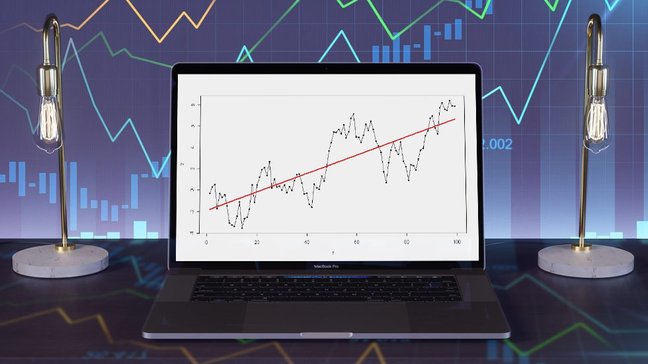What Is Random Walk Theory and How Does It Work?
Also known as the random walk hypothesis, the random walk theory is a specific financial concept developed to oppose traditional technical analysis. It is the financial model that delivers the idea of unpredictable stock price movements.

It says there is no way to foresee how and where the security price will move. The random walk theory followers believe it moves randomly and none of the technical tools can ever help to see where it is heading to. At the same time, the hypothesis is supposed to use historical data to track the price in the past and decide on how it will move in the future.
In this article, we will try to explain how random walk trading works and if it has any benefits over traditional technical trading.
Random Walk Theory Explained
While technical traders believe that the current asset price reflects the current state of the company and the overall market, the stock value generally contains information and data factored into the price.
On the other hand, if the random walk hypothesis is true, none of the existing trading strategies make no sense. Moreover, the majority of convention approaches will fail. If you are the one using technical analysis, you know that it will never happen.
up to 200%

from 0 pips

Trading platform

The only question here is if stock prices are really moving randomly.
How the Random Walk Hypothesis Works
Here is a simple example. Let’s say, you do the research and use technology tools to analyze the historical price of company A. Having all data sorted and analyzed, you expect the share price to go up. As an investor, you decide to buy the share expecting to make a profit on the price growth. Unexpectedly, the share price starts decreasing and moves against you in the next few months.
The followers of the random walk theory believe there is no connection between the current stock price and the way it will move further. Today, the security may cost $20. Tomorrow it may go up to $50 or drop to $5. According to the hypothesis, the current, past, and future stock prices have no connection.
Instead, the random walk trading strategy assumes that the chances of the price moving up or high are 50%. Experienced traders with enough experience and thousands of completed trades can easily prove that the concept is wrong.
Stock prices do not move randomly. We can see it by numerous chart patterns. Some of those patterns are very easy to spot and identify. They move in cycles over a long or short period but still are quite easy to spot. It means that traders have a chance to optimize their strategies following these patterns and stack the odds in their favor.
Is Random Walk Trading Relevant?
Speaking about the relevance, the hypothesis is just a theory mainly discussed in different academic and financial writings. It has not been proved and will hardly ever be proved). In the world of finance, theories sometimes have nothing in common with reality.
Even if you assume implementing the random walk theory and generate a “random” chart, it will still have a pattern. In other words, a computer generates price graphs with clearly observed trading chart patterns that are clearly plotted and easy to spot within a longer timeframe.
If the random walk hypothesis is not backed by facts, why are some traders so skeptical about technical analysis?
Is Technical Analysis Worth Using?
Yes, it is. The fact that technical analysis works are proved by millions of investors. At the same time, some traders prefer using fundamentals rather than technical indicators. Here are some major reasons why some people feel skeptical about it:
- Some traders prefer relying on fundamentals, as they wrongly assume big financial institutions. Sometimes, the information they provide can be misleading or even false.
- Technical analysis is open for interpretation and some traders o not want to use a biased approach.
- Technical trading strategies seem to be inconsistent investing systems for some traders.
The Bottom Line
The above-mentioned sound more like a delusion rather than a justification. The idea is to choose the approach that meets your particular trading style and personality. Each method can be of great use depending on how you prefer to execute transactions.
As for the random walk hypothesis, it currently exists only in theory having nothing in common with the real financial market. Having information backed by numerous sources and technical tools provides more chances to make proper decisions instead of tossing a coin about whether the price will rise or go down.
This material does not contain and should not be construed as containing investment advice, investment recommendations, an offer of or solicitation for any transactions in financial instruments. Before making any investment decisions, you should seek advice from independent financial advisors to ensure you understand the risks.
